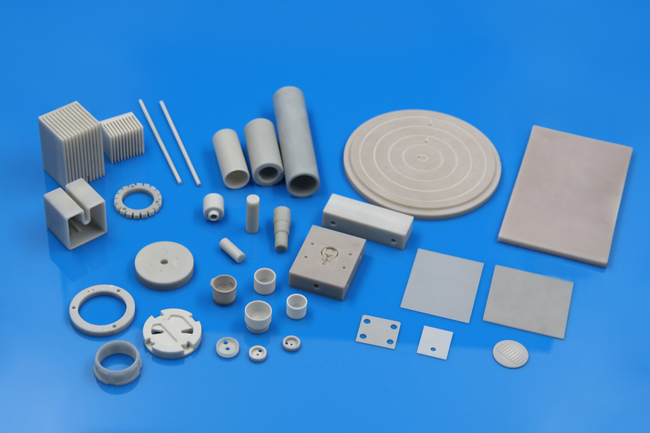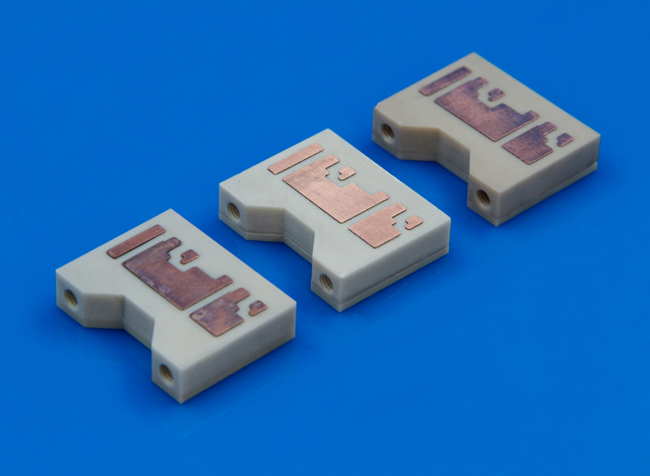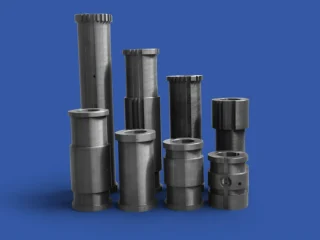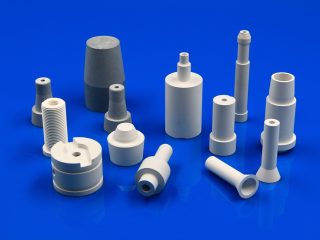Aluminum nitride ceramics, composed mainly of aluminum nitride, possess remarkable properties such as high thermal conductivity, excellent insulation, and low dielectric constant. The crystal structure of aluminum nitride consists of tetrahedral units forming a covalent-bonded compound, exhibiting a spinel-type structure within the hexagonal crystal system. With a chemical composition of 65.81% aluminum and 34.19% nitrogen, and a density of 3.261g/cm3, aluminum nitride ceramics appear white or gray-white, with single crystals being transparent and colorless. These ceramics boast a sublimation decomposition temperature of 2450°C under standard pressure, making them ideal for high-temperature applications. Additionally, their coefficient of thermal expansion ranges from 4.0 to 6.0 * 10^-6/°C, and their polycrystalline form exhibits a thermal conductivity of up to 260W/(m·K), surpassing that of aluminum oxide by 5-8 times, thus demonstrating excellent resistance to thermal shock up to 2200°C. Furthermore, aluminum nitride showcases resistance to corrosion from molten aluminum and other metals, particularly demonstrating outstanding resistance against molten aluminum corrosion.

Despite the various machining methods available for aluminum nitride ceramics, precision machining often necessitates the use of CNC equipment. However, the formidable hardness of aluminum nitride, exceeding 11 GPa, renders conventional metal machining techniques ineffective.

Firstly, machining aluminum nitride ceramics requires specialized tools and techniques distinct from those used for metals. Common tool materials such as tungsten steel should be avoided to prevent rapid deterioration of tool life. Instead, polycrystalline diamond (PCD) tools are preferred for grinding operations due to their diamond composition, enabling effective machining of aluminum nitride materials.
Equally crucial is the establishment of rational machining paths, which significantly influence machining outcomes. During CNC machining of aluminum nitride ceramics, issues like edge collapse after piercing frequently arise. Implementing appropriate machining paths can preempt such occurrences, thereby enhancing the quality of aluminum nitride ceramic products.
Secondly, equipment selection plays a pivotal role due to the hardness of aluminum nitride ceramics. Conventional CNC machine tools often lack the requisite rigidity to effectively machine these materials. Given the extreme hardness of aluminum nitride, machining inevitably induces greater vibrations than other materials. Insufficient rigidity may lead to tool chatter and jeopardize spindle accuracy. For optimal machining of aluminum nitride ceramics, dedicated ceramic machining centers with enhanced rigidity are recommended. These specialized machines mitigate vibration during machining, thereby safeguarding spindle integrity and offering superior protection against abrasive ceramic powders.

It’s worth noting that not only aluminum nitride ceramics but also other advanced ceramics share similar challenges owing to their high hardness and brittle nature. Machining ceramic materials demands not only exceptional craftsmanship but also specialized equipment.
In conclusion, the machining of aluminum nitride ceramics presents unique challenges due to their exceptional hardness and specific properties. Overcoming these challenges requires precision tools, rational machining strategies, and specialized equipment. For precision machining of ceramics, Innovacera offers tailored solutions and expertise in ceramic component manufacturing.




 Enquiry
Enquiry